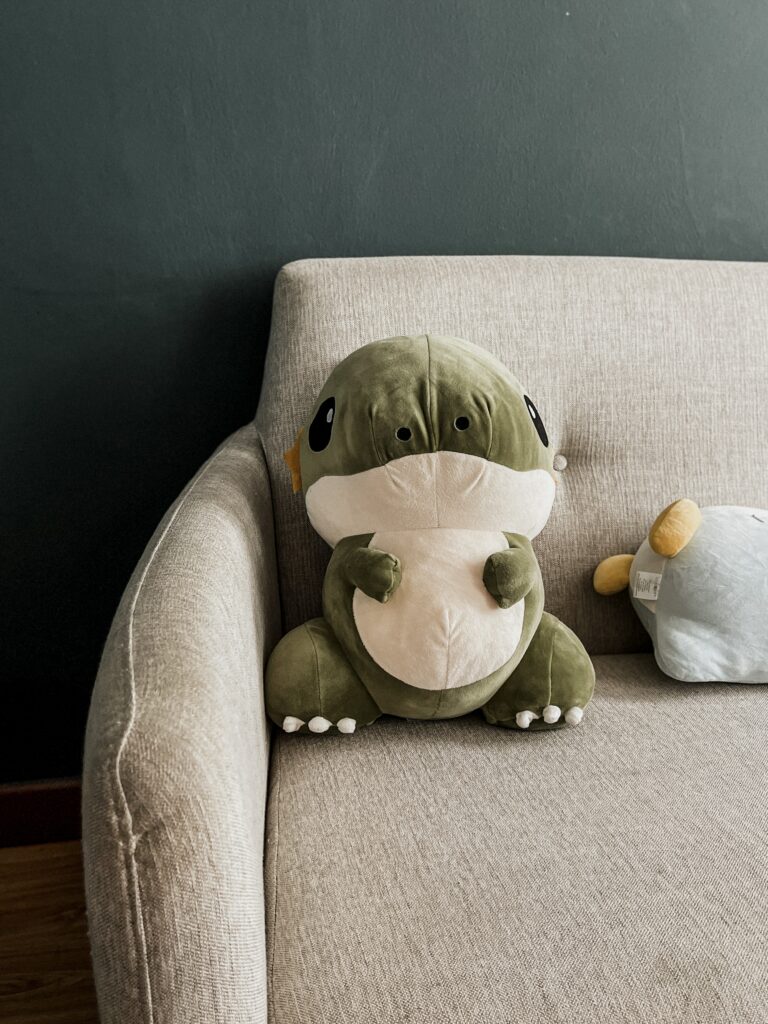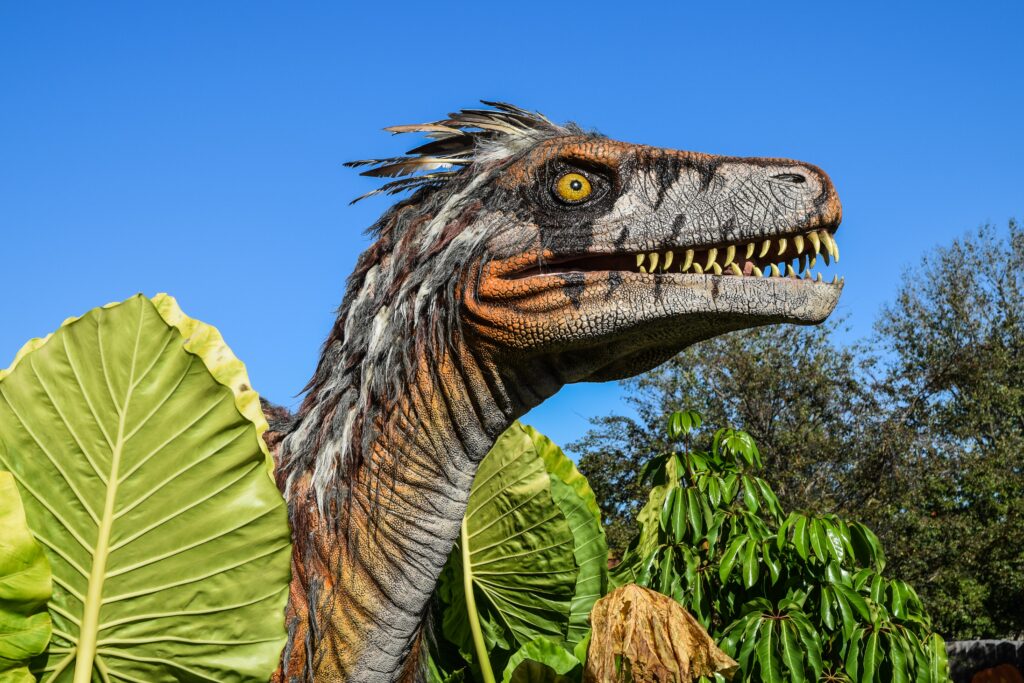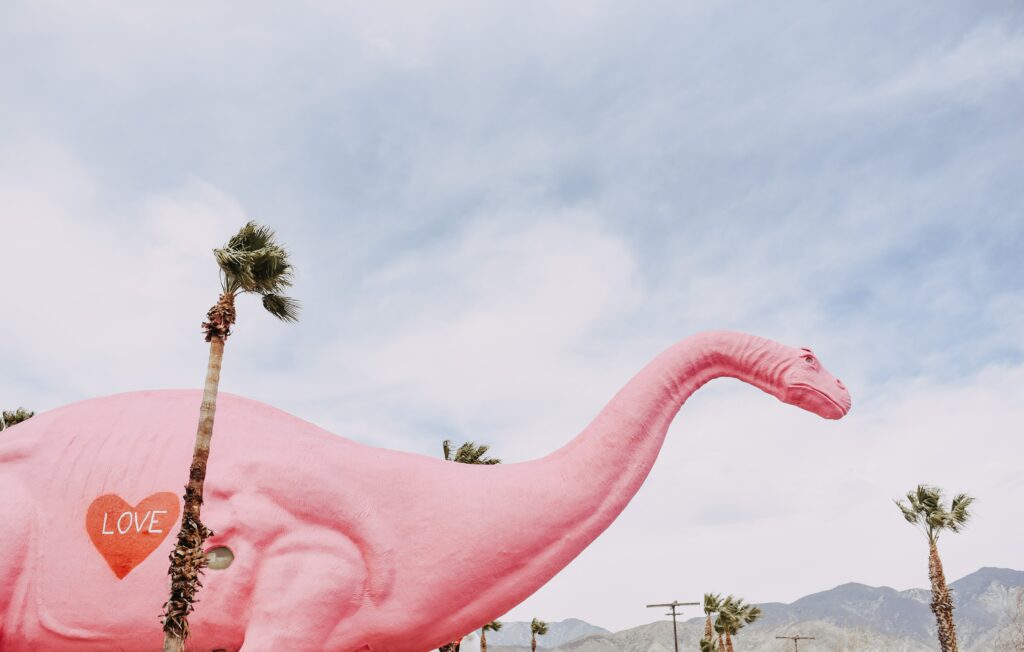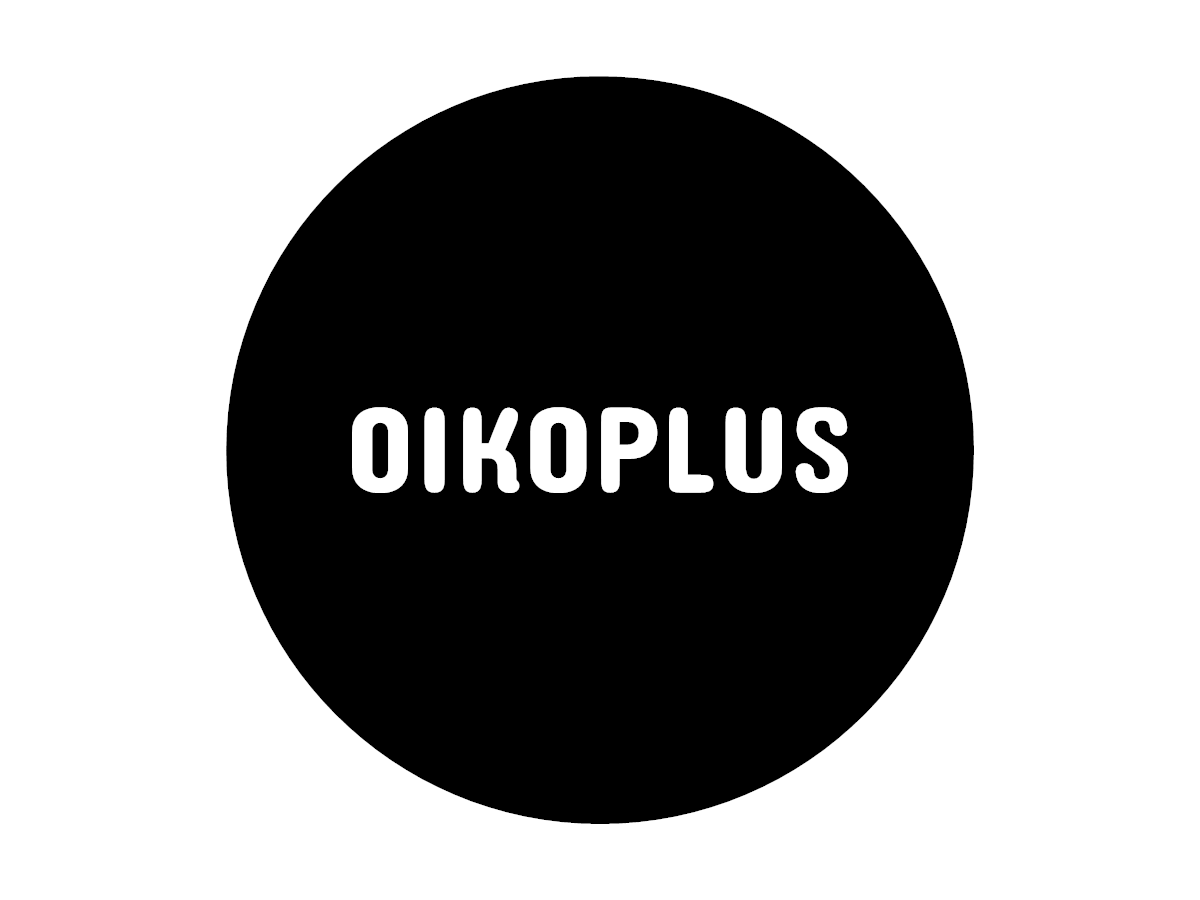Who remembers illustrated volumes about dinosaurs? With leathery, peely skin, a T-Rex gazes into the eyes of the mostly young readers from the cover picture. With its jaw slightly open, teeth gleaming through. Those who dared to immerse themselves in the world of dinosaurs were surprised by unique creatures that once populated our planet. Some of the reptiles depicted resembled dolphins, others had the shape of birds. They flew through the volumes’ air. I particularly remember the dinosaurs on land: the Brachiosaurus with its long neck, the Stegosaurus with the many tiles on its back and the Allosaurus as a small, nimble relative of the Tyrannosaurus. About 25 years after my first encounter with dinosaurs, a meme caught my attention the other day. It asked: What if dinosaurs were fluffy?

Ornitischia: Excursion into palaeontology
First of all, let’s be clear: the idea of cuddly dinosaurs is already at least 20 years old. In 2014, Riley Black wrote an National Geographics article on the state of research on feathered and furry dinosaurs and concludes that the depiction of leathery, scaly dinosaurs is outdated. As an example, he cites the group of Ornitischia. This is interesting from a science communication perspective.
Illustrated volumes: gaining knowledge or compensating for text-based communication weaknesses.
I knew dinosaurs mainly illustrated, after all I had my dinosaur phase as a child who couldn’t read long texts. Which brings us to the dilemma of the picture book: Do we need pictures only until we know the words to describe a phenomenon? Superbly discussed by Nicola Mößner and available to listen to here (in German), the philosopher discusses the role visual representations can play in the process of cognition. For children who lack vocabulary, the question is less controversial: in the online magazine element-i, Patricia Sigg argues (in German) that when looking at picture books, there is another, aesthetic cognition in addition to the knowledge-oriented cognition. It includes the sensory, cognitive, emotional, and social perception of an object. Be mindful of your aesthetic cognition when browsing the great examples of stunningly illustrated science books collected here!

Relational truth: Let’s be unsure
A second aspect that research on the fluffiness of dinosaurs brings to light concerns the absolute truth of scientific statements. Knowledge isn’t static: it is formed and retains validity in recognised systems only. Was it possible for the illustrators of my book to draw of a dinosaur in fur? Soft and cuddly? In the online magazine Aeon, Tom McLeish, for instance, says that science is more about imagination than results. Arno Frank offers a pointed description of five true insights in the Fluter (in German), which, starting from the equation of altitude, confirm the relationality of knowledge and absolute ignorance even in supposedly fact-based sciences. Possibly the illustrators of my illustrated volume were lacking the imagination and knowledge to conceive of a furry, fluffy dinosaur at the time they created the drawings.
Memes: Triggering enquiries
So the question that remains is why it was a meme that made me question my childhood visualisations of dinosaurs. The original definition of the term “meme” comes from Richard Dawkin. In his book The Selfish Gene, Dawkin describes a meme as a cultural artefact that spreads rapidly and uncontrollably. Meanwhile, several research papers and reports have been published on the use of memes in the immediate context of science. On ASBMBToday, Karen R. Resendes describes how her biology students began to communicate in memes and built up a common knowledge base. In “Facts, Opinions, and Scientific Memes” Lars Guenther et al. explore how memes offer an efficient tool for combating alternative facts. Diana K. Riser, Stephanie D. Clarke and Allison N. Stallwort show how memes could work in the communication of knowledge in detail. Unfortunately, their article is hidden behind a paywall.

Anyhow, the fluffy dinosaur meme did its job. It forced me to look and put into perspective my own imagination of findings and knowledge in the field of palaeontology. It made me look into the subject. If memes achieve that, we should use them. How? Inspiration can be found on Pinterest, among other places.


